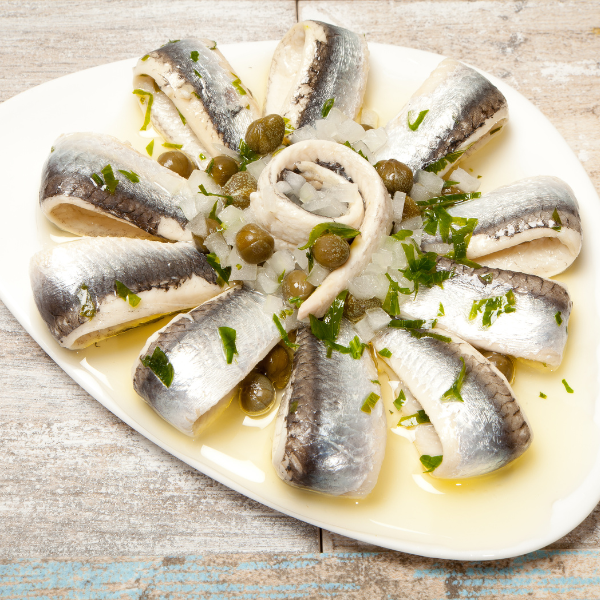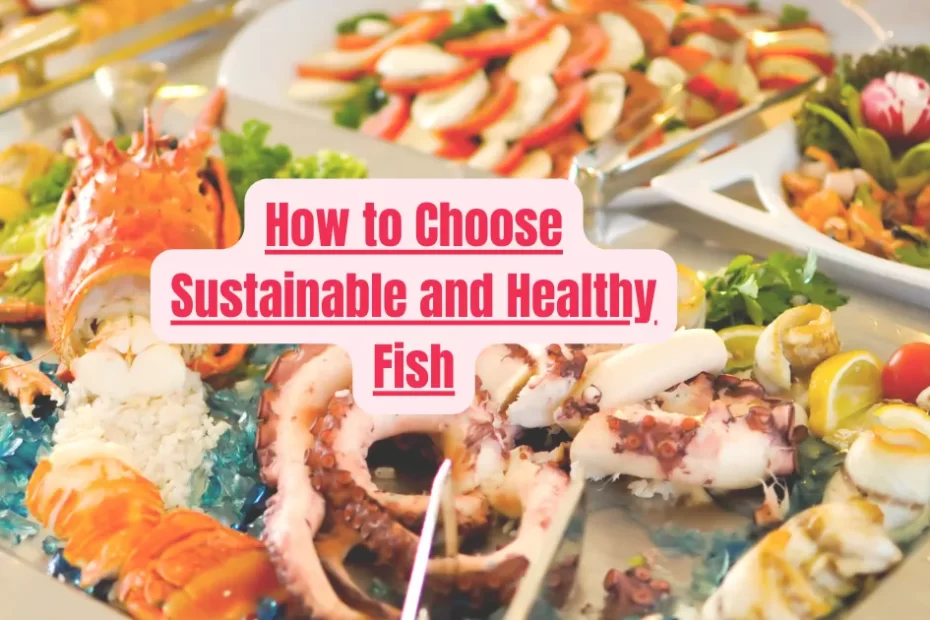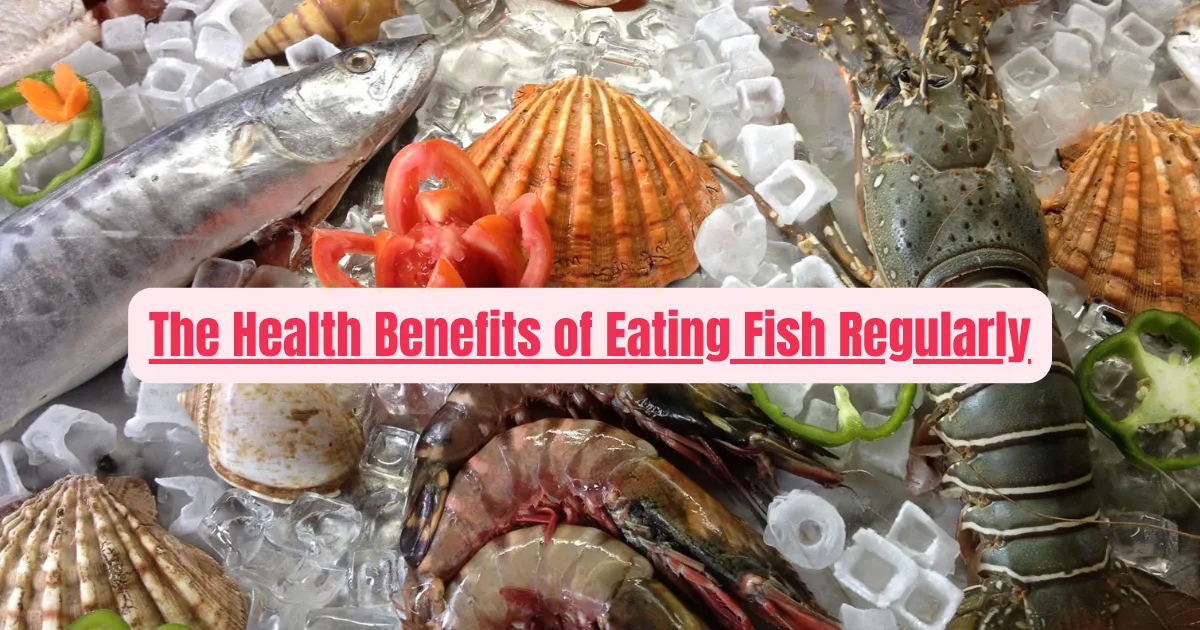Last updated on February 13th, 2024 at 01:20 pm
Are you tired of feeling guilty every time you order seafood because you’re not sure if it’s sustainable or healthy? It’s no secret that overfishing and harmful fishing practices can harm our oceans and the fish populations within them. But the good news is that there are plenty of sustainable and healthy seafood options out there.
What is a healthy fish to eat? We often hear about the benefits of consuming fish, especially salmon, sardines, or tuna. But did you know that these foods also contain essential nutrients such as omega-3 fatty acids, protein, iron, zinc, vitamin B12, and selenium?
Has been recognized that fish is a source of high-quality protein, containing both essential amino acids (protein) and important fats called polyunsaturated fatty acids (PUFAs).
How to Choose Sustainable and Healthy Fish
In addition to being a good source of protein and fat, some types of fish are rich sources of certain vitamins and minerals. For example, oily fish contains large amounts of Vitamin D (which helps regulate bone health), and lean white meat contains high levels of Vitamin B12 (important for blood formation and cell growth), and selenium (an antioxidant that promotes thyroid function and helps prevent cancer).
Fish has been linked to numerous health benefits, ranging from supporting heart health and reducing the risk of cardiovascular diseases, to protecting against cognitive decline and Alzheimer’s disease.
In this article, we’ll dive into the world of sustainable and healthy seafood. We’ll explore what makes a seafood option sustainable and healthy, and we’ll provide you with some tips on how to choose the best options when you’re at the grocery store or dining out. By the end of this article, you’ll be equipped with the knowledge to make more informed and responsible seafood choices.
It is well known that fish support brain development and improve memory, and even boost mood.
Sustainable Fish: Making Eco-Friendly Seafood Choices
Sustainable fish, often labeled as eco-friendly seafood, are the products of responsible fishing and aquaculture practices. These choices are not only delicious but also environmentally responsible. Here’s what you need to know about sustainable fish:
What Is Sustainable Fish?
Sustainable fish come from sources that prioritize the long-term health of fish populations, aquatic ecosystems, and the livelihoods of fishing communities. These practices aim to prevent overfishing, minimize environmental impact, and support healthy oceans.
Key Characteristics of Sustainable Fish:
Abundant Populations: Sustainable fish species are abundant, ensuring that their populations can thrive even with fishing activities.
Responsible Fishing Methods: Eco-friendly fishing methods like pole-and-line, troll, and trap fishing reduce bycatch and minimize damage to ocean habitats.
Well-Managed Aquaculture: Sustainable aquaculture operations follow strict environmental standards, such as minimizing antibiotic use and waste production.
Traceability: You can trace the journey of sustainable fish from source to plate, ensuring transparency and legality.
Certifications: Look for labels like MSC (Marine Stewardship Council) and ASC (Aquaculture Stewardship Council), which certify sustainable seafood.
Low Mercury Levels: Some fish species are naturally lower in mercury, making them safer for regular consumption.
Local and Seasonal Choices: Opting for locally sourced and seasonal fish supports nearby communities and reduces the carbon footprint associated with long-distance transport.
Why Choose Sustainable Fish?
Preserve Ocean Health: Sustainable choices protect marine ecosystems, maintaining biodiversity and the balance of ocean life.
Combat Overfishing: By avoiding overfished species, you help prevent further decline in fish populations.
Support Fishing Communities: Sustainable practices benefit fishing communities by ensuring stable livelihoods and access to fish stocks for future generations.
Health Benefits: Low mercury levels and responsible sourcing make sustainable fish safer and healthier for you and your family.
Nutritional Benefits of Consuming Fish
Fish is a fantastic source of nutrition. It’s rich in omega-3 fatty acids, which are essential for heart health, brain function, and reducing inflammation in the body. Fish is also packed with high-quality protein that helps build and repair tissues, making it a great addition to your diet.
Risks of Contaminated Fish
However, it’s important to be aware that not all fish are created equal. Some fish can contain mercury or other pollutants, which can be harmful if consumed in large amounts. Mercury is a heavy metal that can affect the nervous system, particularly in young children and pregnant women.
Choosing Low Mercury Fish
To minimize these risks, opting for fish with lower mercury levels is wise. Generally, smaller species or those lower on the food chain tend to accumulate less mercury. Examples include:
- Salmon
- Sardines
- Trout
- Anchovies
Eating a variety of fish can also help reduce exposure to specific contaminants, ensuring you get the nutritional benefits without the added risk.
Healthy Fish Choices
Tuna
Fresh tuna has the highest amount of protein per gram of any seafood on this list. A 100-gram serving provides 30.7 grams of protein, putting it ahead of both canned tuna (25.5 grams) and frozen tuna (27.8 grams). Tuna is one of the best sources of lean protein out there, so if you’re trying to build muscle mass, it’s definitely worth considering. You can eat it raw, cooked, or even in sushi or sashimi.
Trout
Trout is a delicious freshwater fish that is relatively low-fat and contains 25 grams of protein per serving. They’re often referred to as “trout” rather than “salmon”.
This high-protein seafood is packed with nutrients including vitamin B3, vitamin B5, vitamin B6, vitamin B12, iron, magnesium, manganese, phosphorous, potassium, selenium, and zinc. Unlike salmon, it’s low in mercury – so it’s safe to eat multiple servings each week. Whether you cook it grilled or baked, trout is also an excellent source of calcium, copper, iodine, molybdenum, sodium, thiamine, and zinc.

Anchovy
Anchovies are small saltwater fish; anchovies don't get much larger than 7 inches in length.
Canned anchovies are very cheap, boasting 28.9g of proteins per 100 grams. However, they also contain lots of salt, so if you are trying to cut down on sodium intake, then these may not be the best choice. They are rich in Omega 3 fatty acids, which are great for heart health.

Lobster
Cooked lobster has fewer calories, less saturated fat, and lower cholesterol than comparable portions of chicken, pork, or beef. It also contains about 20 grams of protein.
As a tasty, low-calorie seafood, lobster is rich in vitamin B12, calcium, iron, zinc, and omega-3 fatty acids. But this high-protein meal may be hard to cook, difficult to digest.

Mackerel
Mackerel In addition to being rich in omega-3 fatty acids, iron, and potassium, mackerel is also full of protein.
Add this delicious fish to your diet and you'll benefit from 25 grams of protein per 3-ounce serving.
Grilled mackerel is the perfect choice for those who want to eat healthy proteins without sacrificing flavor.
Fish Calorie Calculator
Healthy Fish Calorie Calculator
- Are you trying to watch your calorie intake but still want to enjoy a delicious fish dinner? It can be difficult to know how many calories you're consuming when it comes to fish, as different types of fish have different calorie counts. But don't worry, there's a solution!
- Fish Calorie Calculator - a tool that helps you determine the calorie count of different types of fish. With this tool, you can make informed decisions about your food choices and ensure that you're staying within your calorie goals.
- In this article, we'll take a closer look at the Fish Calorie Calculator, how it works, and how you can use it to make healthier choices when it comes to your seafood meals.
Source & Credits
What You Need to Know About Glycemic Index (GI)
https://www.onemedical.com/blog/eat-well/healthy-fish-eating-guide/
https://www.prospre.io/blog/10-high-protein-fish-and-seafood
Diabetic-Friendly Seafood: Nutritional Wonders Smart Choices
Best 9 Low-Glycemic Index Foods for a Diabetic-Friendly Diet


Loving the focus on sustainable & healthy fish! What are your fave ways to prepare it? I’m all about simple lemon & herbs for that fresh flavor burst. Bonus points if you share a hidden gem recipe!